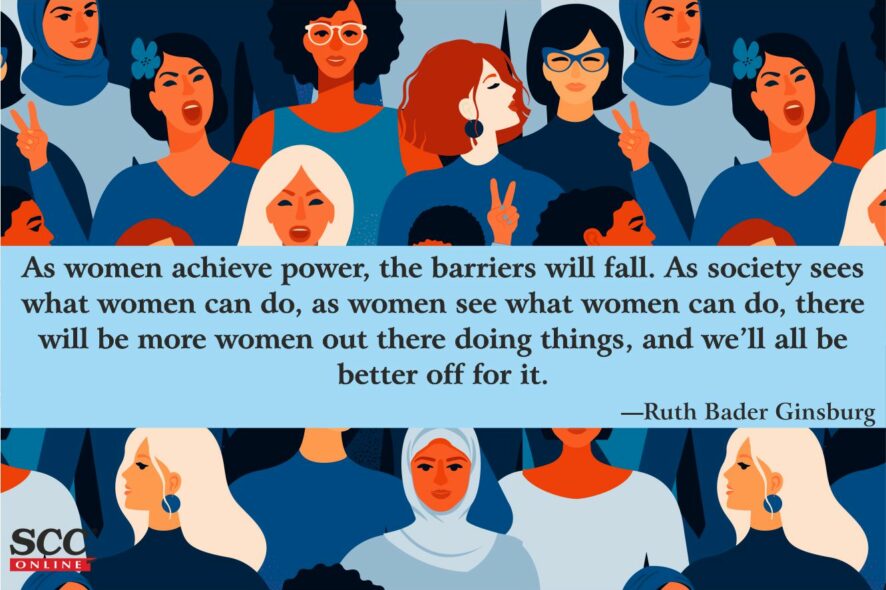Every year, the 8th Day of the month of March is celebrated as International Women’s Day; but what is significance of this day? In order to know more about the evolution of this day, let’s take a trip down the alleyway of history!
United States of America: A Movement is Born[1]
In 1848, United States of America, Elizabeth Cady Stanton and Lucretia Mott, indignant over women being barred from speaking at an anti-slavery convention, gathered over a few hundred people at their nation’s first women’s rights convention in New York. Together they demanded civil, social, political and religious rights for women in a Declaration of Sentiments and Resolutions.
In the year 1909, the Socialist Party of America observed for the first time the “National Women’s Day” on 28th February, in order to honour of the garment workers’ strike in New York, where women protested against working conditions.
The flame spreads to Europe
Inspired by the American Socialists, in 1910, German delegates Clara Zetkin, Käte Duncker and Paula Thiede, proposed the observance of an annual “Women’s Day” with the idea to promote equal rights including “Right To Vote” for women. The Socialist International, meeting in Copenhagen, Denmark established a Women’s Day, international in character, to honour the movement for women’s rights and to build support for achieving universal suffrage (voting rights) for women.[2]
In the year 1911, International Women’s Day was marked for the first time, by over a million people in Austria, Denmark, Germany and Switzerland. Women demanded that they be given the right to vote and to hold public office. They also protested against gender discrimination in employment.
International Women’s Day also became a mechanism for protesting World War I. Russian women observed their first International Women’s Day in February 1913.
In 1914, International Women’s Day was held on 8th March in Germany[3] dedicated to women’s right to vote, which German women did not win until 1918.
On March 8th, 1917, in Petrograd, the capital of the Russian Empire, women textile workers began a demonstration, covering the whole city. Women in Saint Petersburg went on strike that day for “Bread and Peace”[4]– demanding the end of World War I, ending of Russian food shortages, and the end of Czarism (Russian Emperorship). Four days later, the Czar abdicated and the provisional Government granted women the right to vote.
The 70s Era and United Nations
In the 1970s, Women’s Day re-emerged as a day of activism with several women’s groups calling for equal pay, equal economic opportunity, equal legal rights, reproductive rights, subsidized child care, and the prevention of violence against women. After the Second World War, 8th March as Women’s Day started to be celebrated in a number of countries.
In 1975, during the International Women’s Year, the United Nations began celebrating 8th March as International Women’s Day. Two years later, in December 1977, the General Assembly adopted a resolution proclaiming a United Nations Day for Women’s Rights and International Peace to be observed on any day of the year by Member States, in accordance with their historical and national traditions.[5]
International Women’s Day- India’s Tryst
Everywhere in Europe while the women were coming out on the streets demanding their rights, meanwhile in contemporary India, in the year 1917, Margaret Cousins founded the Women’s Indian Association in Adyar, Madras, to create a vehicle for women to influence government policy and focus on equal rights, educational opportunity, social reform, and women’s suffrage.[6]
The British Parliament passed the Representation of the People Act 1918, enfranchising women over the age of 30, who were entitled to be, or who were married to someone entitled to be, a local government elector. Madras was the first province to grant women the “Right to Vote” in 1921.[7]
In 1927, the All India Women’s Conference (AIWC) was formed to advocate for women’s education and was helpful in the passage of the Hindu Code of Bills between 1952 and 1960.
In 1950, the Constitution of India granted voting rights to all women and men. The Constitution of India guaranteed to all Indian women equality; equal opportunity; equal pay for equal work. The Constitution also renounced practices derogatory to the dignity of women; and also allowed for provisions to be made by the State for securing just and humane conditions of work and for maternity relief.
The Government of India declared 2001 as the Year of Women’s Empowerment[8]
Women’s organisations in India first began to emerge in the early 1800s, and later in the 1970s after a period of limited activity from the 1950s to 1970s. India has one of the highest numbers of female politicians in the world. Women have held high offices in India including that of the President, Prime Minister, Speaker of the Lok Sabha and Leader of the Opposition
The Indian Armed Forces began recruiting women to non-medical positions in 1992[9]. The Border Security Force (BSF) began recruiting female officers in 2013. On 24th October 2015, the Indian government announced that women could serve as fighter pilots in the Indian Air Force (IAF)[10].
†Editorial Assistant, EBC Publishing Pvt. Ltd.
[1] https://www.un.org/en/observances/womens-day/background
[2] https://womenwatch.unwomen.org/international-womens-day-history
[3] https://www.dw.com/en/berlin-marks-first-official-womens-day-holiday/a-47811363
[4] The Guardian, Women -protest sparked Russian revolution
[5] https://www.un.org/en/observances/womens-day/background
[6] The Hindu, Emancipation of Women
[7] Political Participation of Women in India
[8] https://pib.gov.in/newsite/erelcontent.aspx?relid=1039
[9] Reuters, Indian Armed Forces to recruit women for all combat roles
[10] Digital Journal, India paves way for women in army combat








This was really informative.